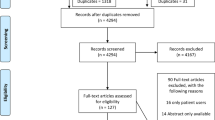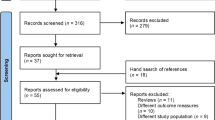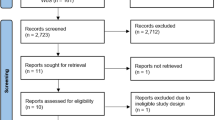Abstract
Chest pain is common: one in four of the population have an episode annually. Of those who present to hospital, nearly two-thirds have noncardiac chest pain. More than half of these cases might have gastroesophageal reflux disease. Opinion differs over what is the most appropriate application of current investigatory methods. Evidence suggests that, once cardiac disease is ruled unlikely, empiric use of a proton pump inhibitor is an option; if acid suppression fails, detailed investigations as clinically indicated can be considered. A range of esophageal investigations is available, including 24-hour or 48-hour esophageal pH testing and esophageal manometry, as well as provocative tests, but there is no consensus as to which methods are the most useful. Psychiatric evaluation is not routine, but psychiatric or psychological disorders are common. Musculoskeletal disorders are also common, but are frequently overlooked. It is possible to subject patients to a comprehensive set of investigations before empiric therapy, but recent studies have failed to demonstrate an improved outcome using this exhaustive approach. A new tactic is required, with less attention spent on absolute diagnostic accuracy and more emphasis on optimizing the long-term clinical outcome in patients with noncardiac chest pain. It is possible that the targeted use of multiple drug trials in a policy of 'therapy as investigation' might be a superior methodology.
This is a preview of subscription content, access via your institution
Access options
Subscribe to this journal
Receive 12 print issues and online access
$209.00 per year
only $17.42 per issue
Buy this article
- Purchase on Springer Link
- Instant access to full article PDF
Prices may be subject to local taxes which are calculated during checkout


Similar content being viewed by others
References
Eslick GD et al. (2002) The burden of illness of non-cardiac chest pain. Aliment Pharmacol Ther 16: 1217–1223
Eslick GD et al. (2003) Non-cardiac chest pain: prevalence, risk factors, impact and consulting—a population-based study. Aliment Pharmacol Ther 17: 1115–1124
Brodin EC et al. (1994) Apparently coronary heart disease-free patients in the coronary care unit: characteristics, medical care, and 1-year outcome. Coron Artery Dis 5: 737–743
Byrne J et al. (2002) An audit of activity and outcome from a daily and a weekly “one stop” rapid assessment chest pain clinic. Postgrad Med 78: 43–46
Eslick GD (2005) Usefulness of chest pain character and location as diagnostic indicators of an acute coronary syndrome. Am J Cardiol 95: 1228–1231
Fox KF (2005) Investigation and management of chest pain. Heart 91: 105–110
Tatum JL et al. (1997) Comprehensive strategy for the evaluation and triage of the chest pain patient. Ann Emerg Med 29: 116–125
Braunwald E et al. American College of Cardiology. American Heart Association. Committee on the Management of Patients with Unstable Angina (2002) ACC/AHA 2002 guideline update for the management of patients with unstable angina and non-ST-segment elevation myocardial infarction—summary article: a report of the American College of Cardiology/American Heart Association task force on practice guidelines (Committee on the Management of Patients with Unstable Angina). J Am Coll Cardiol 40: 1366–1374
Wong WM et al. (2005) Attitudes and referral patterns of primary care physicians when evaluating subjects with noncardiac chest pain—a national survey. Dig Dis Sci 50: 656–661
Eslick GD and Talley NJ (2004) Non-cardiac chest pain: predictors of health care seeking, the types of health care professional consulted, work absenteeism and interruption of daily activities. Aliment Pharmacol Ther 20: 909–915
Panting JR et al. (2002) Abnormal subendocardial perfusion in cardiac syndrome X detected by cardiovascular magnetic resonance imaging. N Engl J Med 346: 1948–1953
Mellow MH et al. (1983) Esophageal acid perfusion in coronary artery disease. Induction of myocardial ischemia. Gastroenterology 85: 306–312
Chauhan A et al. (1996) Cardio-oesophageal reflex in humans as a mechanism for “linked angina”. Eur Heart J 17: 407–413
Makk JL et al. (2000) Cardioesophageal reflexes: an invasive human study. Dig Dis Sci 45: 2451–2454
Lux G et al. (1995) Ambulatory oesophageal pressure, pH and ECG recording in patients with normal and pathological coronary angiography and intermittent chest pain. Neurogastroenterol Motil 7: 23–30
Ghillebert G and Janssens J (1998) Oesophageal pain in coronary artery disease. Gut 42: 312–319
Garcia-Pulido J et al. (1990) Esophageal contribution to chest pain in patients with coronary artery disease. Chest 98: 806–810
Bortolotti M et al. (1990) The esophagus as a possible cause of chest pain in patients with and without angina pectoris. Hepatogastroenterology 37: 316–318
Schofield PM et al. (1989) Oesophageal function in patients with angina pectoris: a comparison of patients with normal coronary angiograms and patients with coronary artery disease. Digestion 42: 70–78
Wise CM et al. (1992) Musculoskeletal chest wall syndromes in patients with noncardiac chest pain: a study of 100 patients. Arch Phys Med Rehabil 73: 147–149
Wolf E and Stern S (1976) Costochondral syndrome: its frequency and importance in differential diagnosis of coronary heart disease. Arch Intern Med 136: 189–191
Disla E et al. (1994) Costochondritis. a prospective analysis in an emergency department setting. Arch Intern Med 154: 2466–2469
Freeston J et al. (2004) Can early diagnosis and management of costocondritis reduce acute chest pain admissions? J Rheumatol 31: 2269–2271
Yoshikawa H et al. (1998) Hands up for angina. Lancet 352: 702
Hsia PC et al. (1991) Utility of upper endoscopy in the evaluation of noncardiac chest pain. Gastrointestinal Endoscopy 37: 22–26
Vantrappen G and Janssens J (1986) Angina and esophageal pain—a gastroenterologist's point of view. Eur Heart J 7: 828–834
Summerton SL (2005) Radiographic evaluation of esophageal function. Gastrointest Endoscopy Clin N Am 15: 231–242
Wu WC (1990) Ancillary tests in the diagnosis of gastroesophageal reflux disease. Gastroenterol Clin N Am 19: 671–681
Mittal RK (2005) Motor and sensory function of the esophagus: revelations through ultrasound and imaging. J Clin Gastroenterol 39 (Suppl 2): S42–S48
Lam HG et al. (1992) Acute noncardiac chest pain in a coronary care unit. Evaluation by 24-hour pressure and pH recording of the esophagus. Gastroenterology 102: 453–460
Lacima G et al. (2003) Utility of ambulatory 24-hour esophageal pH and motility monitoring in noncardiac chest pain: Report of 90 patients and review of the literature. Dig Dis Sci 48: 952–961
Streets CG and DeMeester TR (2003) Ambulatory 24-hour esophageal pH monitoring: why, when, and what to do. J Clin Gastroenterol 37: 14–22
Lam HG et al. (1994) What is the optimal time window in symptom analysis of 24-hour esophageal pressure and pH data? Dig Dis Sci 39: 402–409
Pandolfino JE (2005) Bravo capsule pH monitoring. Am J Gastroenterol 100: 8–10
Pandolfino JE and Kahrilas PJ (2005) Prolonged pH monitoring: Bravo capsule. Gastrointest Endoscopy Clin N Am 15: 307–318
Pandolfino JE et al. (2005) Bravo capsule placement in the gastric cardia: A novel method for analysis of proximal stomach acid environment. Am J Gastroenterol 100: 1–7
Frobert O et al. (1996) Upper endoscopy in patients with angina and normal coronary angiograms. Endoscopy 37: 22–26
Fass R and Winters GF (2001) Evaluation of the patient with noncardiac chest pain: is gastroesophageal reflux disease or an esophageal motility disorder the cause? Medscape Gastroenterol 3: 1–10
Meshkinpour H et al. (1982) Esophageal manometry: a benefit and cost analysis. Dig Dis Sci 27: 772–775
Achem SR et al. (1993) Chest pain associated with nutcracker esophagus: a preliminary study of the role of gastresophageal reflux. Am J Gastroenterol 88: 187–192
Kahrilas PJ (1993) Nutcracker esophagus: an idea whose time has gone? Am J Gastroenterol 88: 167–169
Frobert O et al. (1996) Diagnostic value of esophageal studies in patients with angina-like chest pain and normal coronary angiograms. Ann Intern Med 124: 959–969
Eckardt VF et al. (1999) Chest pain in achalasia: Patient characteristics and clinical course. Gastroenterology 116: 1300–1304
Ahmed T and Vaezi MF (2005) The role of pH monitoring in extraesophageal gastroesophageal reflux disease. Gastrointest Endoscopy Clin N Am 15: 319–331
Wong WH et al. (2005) Is proton pump inhibitor testing an effective approach to diagnose gastroesophageal reflux disease in patients with noncardiac chest pain? A meta-analysis. Arch Intern Med 165: 1222–1228
Cremonini F et al. (2005) Diagnostic and therapeutic use of proton pump inhibitors in noncardiac chest pain: a meta-analysis. Am J Gastroenterol 100: 1226–1232
Katon W et al. (1988) Chest pain: relationship of psychiatric illness to coronary angiographic results. Am J Med 84: 1–9
Bass C et al. (1983) Patients with angina with normal and near normal coronary arteries: clinical and psychosocial state 12 months after angiography. BMJ 287: 1505–1508
Clouse RE and Lustman PJ (1983) Psychiatric illness and contraction abnormalities of the esophagus. N Engl J Med 309: 1337–1342
Clouse RE and Carney RM (1995) The psychological profile of noncardiac chest pain patients. Eur J Gastroenterol Hepatol 7: 1160–1165
Bradley LA et al. (1992) Psychosocial and psychophysical assessments of patients with noncardiac chest pain. Am J Med 92: 65S–73S
Potts SG and Bass CM (1993) Psychosocial outcome and use of medical resources in patients with chest pain and normal or near-normal coronary arteries: a long-term follow-up study. Q J Med 86: 583–593
Chandra P and Clouse RE (1999) Long-term outcome from tricyclic antidepressant treatment of functional chest pain. Dig Dis Sci 44: 2373–2379
Eslick GD and Fass R (2003) Noncardiac chest pain: evaluation and treatment. Gastroenterol Clin N Am 32: 531–552
Faybush EM and Fass R (2004) Gastroesophageal reflux disease in noncardiac chest pain. Gastroenterol Clin N Am 33: 41–54
Richter JE et al. (1987) Oral nifedipine in the treatment of noncardiac chest pain in patients with the nutcracker esophagus. Gastroenterology 93: 21–28
Masumoto A et al. (2001) Three-year follow-up of the Japanese patients with microvascular angina attributable to coronary microvascular spasm. Int J Cardiol 81: 151–156
D'Onofrio V et al. (2002) Long-term follow-up of achalasia patients treated with botulinum toxin. Dig Liver Dis 34: 105–110
Storr M et al. (2001) Treatment of diffuse esophageal spasm by endoscopic injections of botulinum toxin: a prospective study with long-term follow-up. Gastrointest Endosc 54: 754–759
Miller LS et al. (2002) Treatment of chest pain in patients with noncardiac, nonreflux, nonachalasia spastic esophageal motor disorders using botulinum toxin injection into the gastroesophageal junction. Am J Gastroenterol 97: 1640–1646
Clouse RE (1994) Antidepressants for functional gastrointestinal syndromes. Dig Dis Sci 39: 2352–2363
Prakash C and Clouse RE (1999) Long-term outcome from tricyclic antidepressant treatment of functional chest pain. Dig Dis Sci 44: 2373–2379
Varia I et al. (2000) Randomized trial of sertaline in patients with unexplained chest pain of noncardiac origin. Am Heart J 140: 367–372
Clouse RE et al. (1987) Low-dose trazodone for symptomatic patients with esophageal contraction abnormalities. Double-blind, placebo-controlled trial. Gastroenterology 92: 1027–1036
Cannon RO III et al. (1994) Imipramine in patients with chest pain despite normal coronary angiograms. N Engl J Med 20: 1411–1417
Handa M et al. (1999) Antidepressant treatment of patients with diffuse esophageal spasm—A psychosomatic approach. J Clin Gastroenterol 28: 228–232
Galligan JJ (2004) Enteric P2X receptors as potential targets for drug treatment of irritable bowel syndrome. Br J Pharmacol 141: 1294–1302
Crowell MD (2004) Role of serotonin in the pathophysiology of the irritable bowel syndrome. Br J Pharmacol 141: 1285–1293
Geppetti P and Trevisani M (2004) Activation and sensitization of the vanilloid receptor: role in gastrointestinal inflammation and function. Br J Pharmacol 141: 1313–1320
Varga G et al. (2004) Involvement of endogenous CCK and CCK1 receptors in colonic motor function. Br J Pharmacol 141: 1275–1284
Lecci A et al. (2004) Tachykinin NK2 antagonists for the treatment of irritable bowel syndrome. Br J Pharmacol 141: 1249–1263
Riviere PJ -M (2004) Peripheral kappa-opioid agonists for visceral pain. Br J Pharmacol 141: 1331–1334
Hornby PJ and Prouty SM (2004) Involvement of cannabinoid receptors in gut motility and visceral perception. Br J Pharmacol 141: 1335–1345
Delvaux M et al. (1999) The kappa agonist fedotozine relieves hypersensitivity to colonic distention in patients with irritable bowel syndrome. Gastroenterology 116: 38–45
Fioramonti J and Bueno L (2002) Centrally acting agents and visceral sensitivity. Gut 51 (Suppl 1): S91–S95
Delvaux M (2001) Pharmacology and clinical experience with fedotozine. Expert Opin Invest Drugs 10: 97–110
Longmore J et al. (1997) Neurokinin-receptor antagonists: pharmacological tools and therapeutic drugs. Can J Physiol Pharmacol 75: 612–621
Hazan S et al. (1996) Octreotide improves sensory and pain thresholds in patients with noncardiac chest pain. Gastroenterology 110: A132
Eslick GD (2004) Non-cardiac chest pain: Epidemiology, natural history, health care seeking behaviour and quality of life. Gastroenterol Clin N Am 33: 1–23
Acknowledgements
We would like to thank Christopher J Martin for the radiology image of the esophageal spasm. Thank you also to Chris Henwood from the Nepean Hospital Audiovisual Department for his assistance with the figures.
Author information
Authors and Affiliations
Corresponding author
Ethics declarations
Competing interests
Nicholas J Talley has consulted for, and received research support from, AstraZeneca and TAP.
Rights and permissions
About this article
Cite this article
Eslick, G., Coulshed, D. & Talley, N. Diagnosis and treatment of noncardiac chest pain. Nat Rev Gastroenterol Hepatol 2, 463–472 (2005). https://doi.org/10.1038/ncpgasthep0284
Received:
Accepted:
Issue Date:
DOI: https://doi.org/10.1038/ncpgasthep0284



